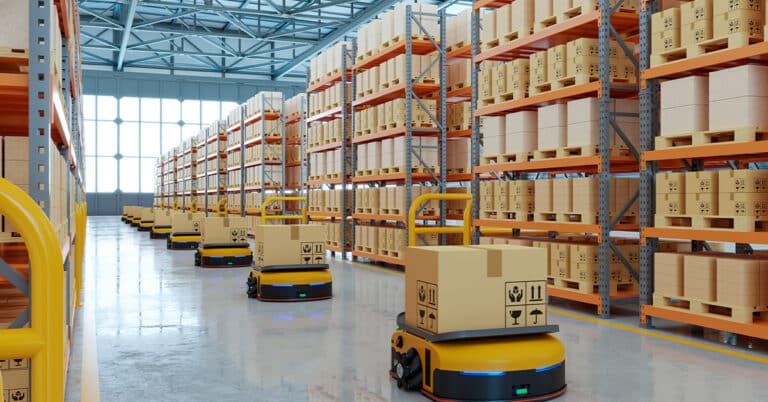As industrial automation has advanced and expanded, the promise of true “lights-out” manufacturing has been one of the most consistent objectives that manufacturers cite in the benefits of this technology. Lights-out manufacturing — sometimes also called the dark factory, or dark manufacturing — refers to the idea of fully automated production without the on-site presence or intervention of human workers, with the name derived from the assumption that automated equipment does not need the lights on in order to operate.
Here, we will look at how the dark factory is coming to fruition, and what the potential benefits of lights-out manufacturing can be.
Requirements for dark manufacturing
The lights-out facility — or even lights-out areas of the facility, or lights-out shifts — requires a number of technical and process elements in place, the implementation of which often requires a dedicated digital transformation strategy by the manufacturer. These requirements draw from a range of automation technology, Industry 4.0 in manufacturing, Industrial Internet of Things technology and more, including:
- 5G connectivity
- Industrial sensors
- Robotics and automation equipment
- 3D printing equipment
- Nondestructive QC capabilities
- An understanding of AI and machine learning technology, and an implementation of this technology
- VR and AR technology
- Technology for digital twin in manufacturing
- A need for standardized part production, ideally in higher volumes, in order to maximize the strengths of automation technology
Lights-out manufacturing examples
Lights-out manufacturing is seeing use across a broad range of industries and applications. In some cases, such as pharmaceutical manufacturing and semiconductor manufacturing, lights-out manufacturing is not just an efficiency benefit, but is essentially a requirement in order to properly carry out the processes at hand. This is because these processes require strict contaminant control and high-precision processes with extremely slim margins for error or variance — all of which cater to the strengths of fully automated processes where human workers are not directly involved.
Other examples of dark manufacturing strategies and facilities that are already occurring include:
- FANUC: Robotics company FANUC operates at least one plant, located in Japan, on a completely lights-out basis. At this facility, automation robots make more robots, and the facility is reportedly capable of operating without human intervention for 30 days at a time.
- Philips: Philips operates a razor-manufacturing facility with minimal human oversight — nine staff members oversee quality assurance, while all production processes are automated.
- Amazon: While not a manufacturer, Amazon is at the cutting edge of extensive robot use for inventory and fulfillment, with a particular focus on collaborative robots (cobots) working with staff to increase efficiency and throughput.

Dark manufacturing and similar processes are also increasingly used in micro factory applications built specifically for high levels of automation.
Benefits of lights-out manufacturing
- Improved accuracy: Fully automated manufacturing processes eliminate the chance of human error, which is one of the leading root causes of production errors and rework. Once programmed correctly, robots and automation equipment carry out the same process, at the same time, over and over.
- Scheduling and uptime benefits: Automation equipment does not take lunch breaks, holidays or sick time, meaning that it is theoretically able to operate 24/7/365. Shifts do not need to be covered or canceled with fully automated processes.
- Lower costs: Automation can reduce labor costs while also creating production efficiencies that further reduce costs by increasing production speed and reducing or eliminating the need for rework or part discards due to quality errors.
- Higher-value tasks for workers: By shifting the most monotonous tasks to robots, facilities can better leverage the knowledge and expertise of their staff to higher-value areas: troubleshooting, strategy, innovation/R&D and more.
At ATS, we offer expertise in Industry 4.0 implementation and technology focused on condition monitoring and predictive maintenance for improving your overall operational efficiency. From reliability expertise to analytics support, we work with you to help eliminate unplanned downtime. To learn more, contact us today.


